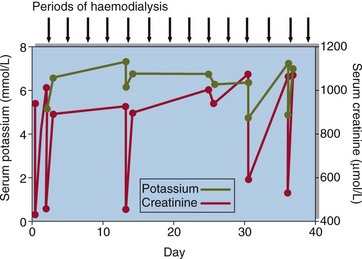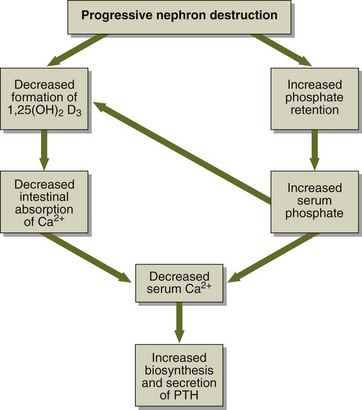19 Hyperkalaemia is a feature of advanced CRF and poses a threat to life (Fig 19.1). The ability to excrete potassium decreases as the GFR falls, but hyperkalaemia may not be a major problem in CRF until the GFR falls to very low levels. Then, a sudden deterioration of renal function may precipitate a rapid rise in serum potassium concentration. An unexpectedly high serum potassium concentration in an outpatient should always be investigated with urgency. The ability of the renal cells to make 1,25-dihydroxycholecalciferol falls as the renal tubular damage progresses. Calcium absorption is reduced and there is a tendency towards hypocalcaemia. Phosphate retention, along with low calcium, induces a rise in parathyroid hormone (PTH), and the latter may have adverse effects on bone if this is allowed to continue (renal osteodystrophy; Fig 19.2).
Chronic renal failure
Consequences of CRF
Potassium metabolism
Calcium and phosphate metabolism
Chronic renal failure





